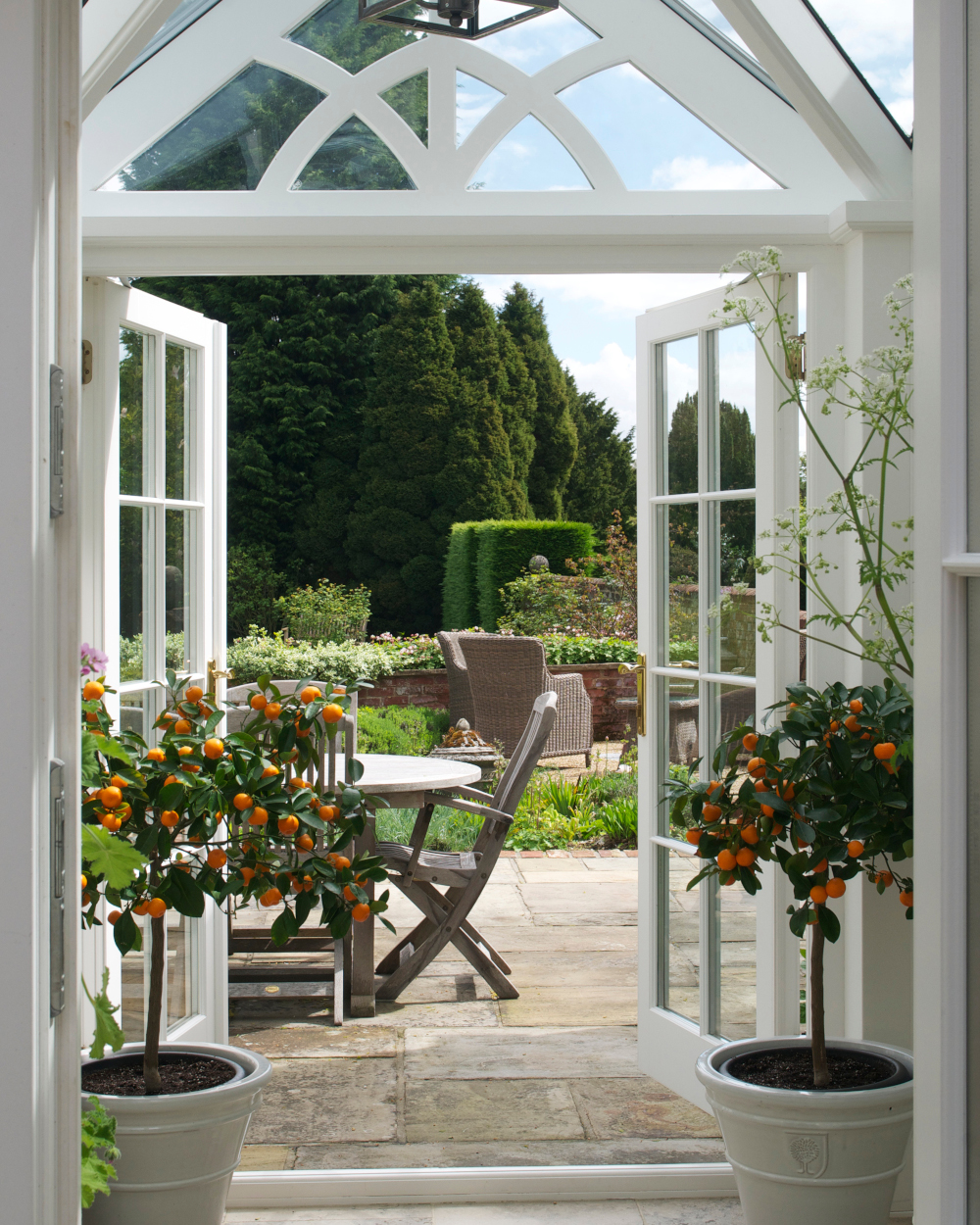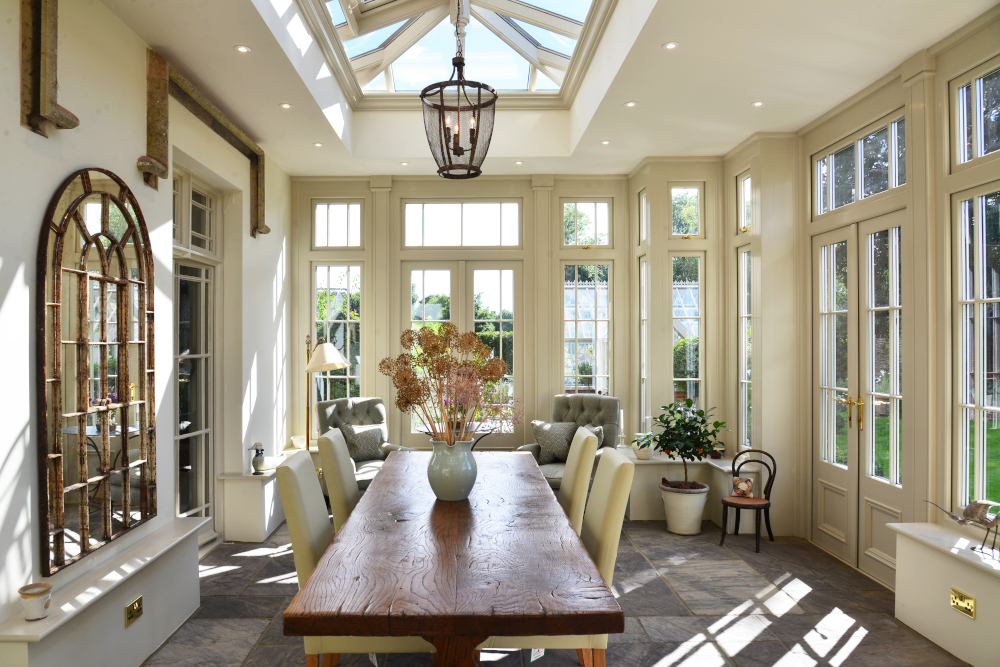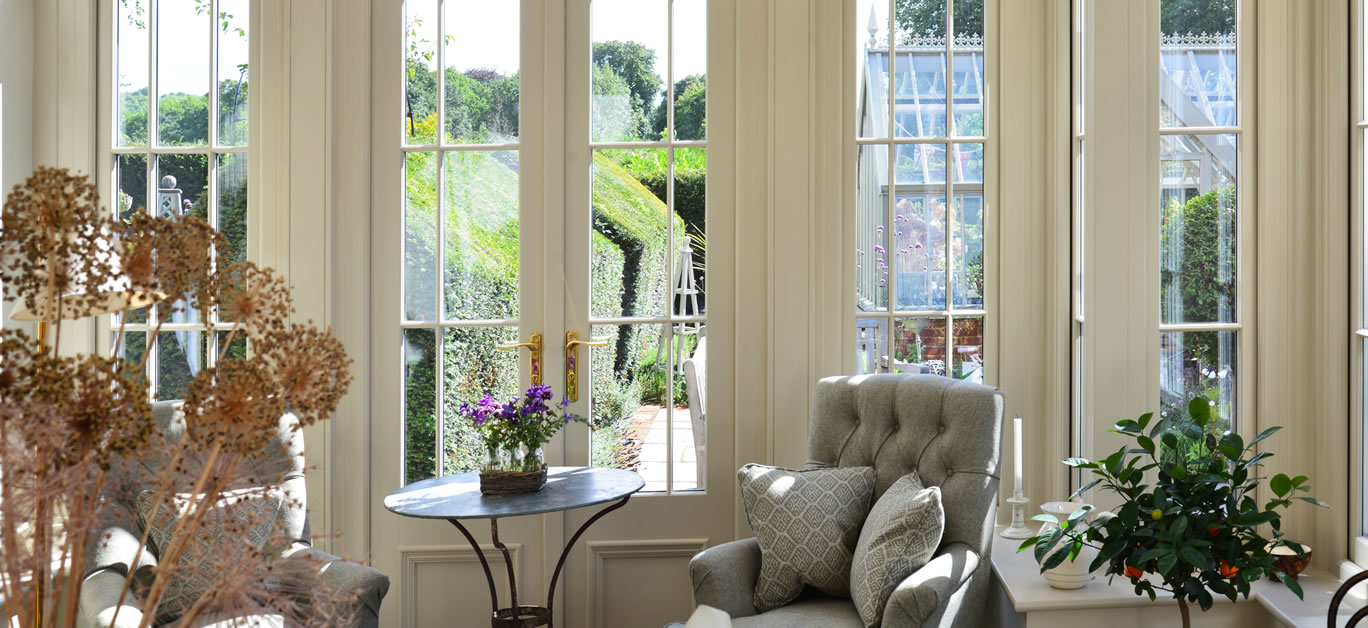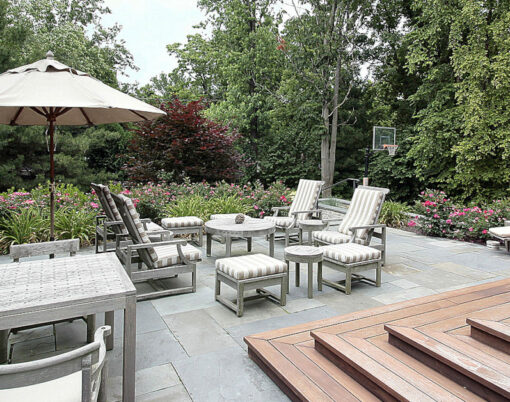Words by Karen Bell, sales director at David Salisbury – manufacturers of award-winning orangeries and garden rooms.
Given the average British summer, you could be forgiven for assuming it’s not particularly easy to grow plants and fruit trees in this country, but thanks to the structural makeup of orangeries, these extensions can be a great source of warmth and shelter for those that typically don’t survive in cold weather.
Whilst their name reflects their original use, it’s fair to say orangeries aren’t primarily used for this purpose anymore – but they could be.
With people spending more time at home, working remotely, and turning increasingly towards nature-based hobbies and sustainable eating habits, the prospect of growing your own fruit could be very attractive, and more practical than you’d think too.
In fact, new glazing technologies provide ambient temperatures that are comfortable and stable all year round which in turn gives homeowners more choice when it comes to selecting plants and trees. The colour and scent of growing fruit trees is also a vibrant addition to the home. What could be more relaxing on a warm summer evening, than sitting back in your glazed extension with the gorgeous scent of blossoms circulating around you? And not only do they bring life to a room, they can also help to purify the air too.
We take a look at the fruit plants our orangery clients typically see thrive.

Orange trees
Naturally, the kind of trees you opt for will depend largely on your extension itself, your tastes and how much maintenance you can provide.
A Valencia is the most widely-grown variety of orange tree in the world, and produces big, sweet and juicy oranges, so these are always a popular choice.
Those with a smaller orangery, or limited time on their hands, may wish to look at dwarf orange trees, which as the name would suggest, are naturally smaller. These are easier to manage and don’t require you to cut and shape the tree down. They’re still regular fruit trees, they’ve just been grafted onto smaller plant rootstock.
If aesthetics are high up your list, it may be worth looking at the Citrus Madurensis Calamondin, which is a pretty orange plant that keeps its foliage all year round and is known for its glossy dark green leaves and fragrant white flowers. This bushy evergreen shrub grows into a small tree, so is ideal again for those with less space to play with.

Lemon trees
Lemon trees are another popular plant to grow in an orangery, and tend to grow faster than an orange tree, as well as producing fruit during all seasons.
In particular, the Meyer Lemon can be a great choice, producing slightly sweeter lemons than you’re likely to find in the supermarket, as technically they are a thin-skinned hybrid fruit, part lemon and part mandarin orange. They also live for up to 60 years.
In general, oranges and lemons are better suited to being grown in an orangery than limes. Where orange and lemon trees tend to be a bit hardier and can tolerate lower temperatures, limes on the other hand require warmer, more tropical temperatures. Of course, growing limes is not entirely impossible in the UK if it’s something you’ve got your heart set on – you’ll just need to do your research first.

Cherry trees
It’s not all about citrus fruits, many kinds of fruit trees and plants can grow well in orangeries, and cherry trees in particular are a good option.
Aside from providing delicious cherries in the summer months, cherry trees also have a beautiful blossom in the spring, brightening up your space and adding a splash of colour to your room. A Sylvia cherry tree is a great addition to a kitchen orangery, producing sweet cherries and a fantastic focal point without taking up too much space.
What else do I need to consider?
One of the most important things to bear in mind when growing fruit in an orangery is ventilation. Leave windows and doors open when you can in the summer months to bring fresh air in and keep it circulating to reduce pest issues.
You may also have other features like French doors, bi-fold doors, or roof vents, that are useful when it comes to growing plants. In particular, automated roof vents are handy as they can be specified to operate via remote control, or fully automatic, with temperature control and rain sensors.
Underfloor heating can also be added to provide a constant, uniform warmth during the winter months.
If you’re looking for a way to stimulate your senses, a fruit tree is a great option. Not only do they create a stunning orangery centrepiece and smell and taste wonderful, but the benefits of a little therapeutic horticulture are known to improve both physical and mental wellbeing too.
Karen Bell is sales director at David Salisbury, a company manufacturing and installing top of the range hardwood conservatories, garden rooms and orangeries for over 30 years.






















